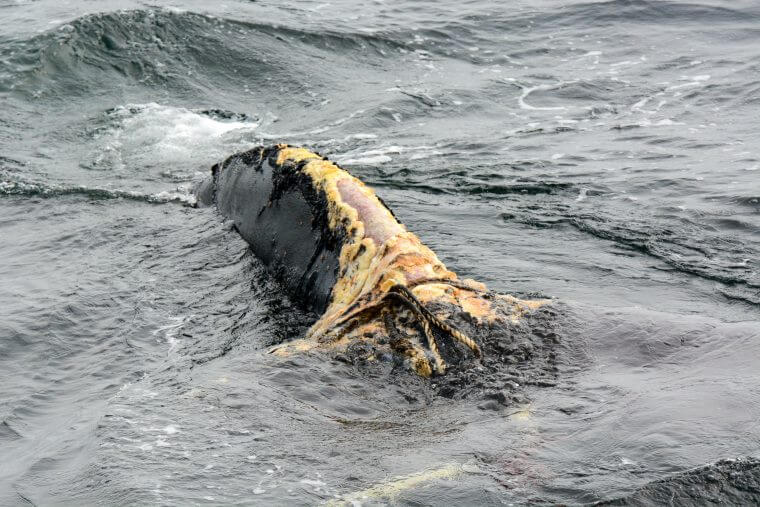Right whales EG4423 and EG4440 are now swimming a little lighter since shedding some of the rope that had been wrapped around their bodies. On July 16, the Campobello Whale Rescue Team, assisted by crews from Fisheries and Oceans Canada and the National Oceanic and Atmospheric Administration (NOAA), was able to resume its attempts to rescue two out of three entangled right whales. Weather conditions of the previous days were too dangerous to attempt such an operation.
During aerial surveillance flights, right whale EG4423 was spotted in the morning. She had already been partially disentangled on July 11. Despite the efforts made on July 16, it was not possible to completely remove the fishing gear in which she had become ensnared, though responders were able to detach some of the rope. The teams present likely reduced the load that this whale had been dragging with it since April 2019, when it was potentially observed in the United States.
As for EG4440, it was spotted in the late afternoon. Although it, too, could not be completely released from the fishing gear in which it is trapped, the rope caught from the jaw to the tail was able to be cut off.
Overflights will continue over the next few days to document the presence and activities of right whales in the Gulf of St. Lawrence. If entangled whales EG4440 and EG 4423 are spotted again, teams will observe how their predicaments have evolved following these disentanglement attempts. The teams have not yet relocated the third entangled whale.
No other entanglement incidents involving North Atlantic right whales have been observed since the discovery of these three whales.
From July 17 to 19, fishery officers and Coast Guard members will patrol the Gulf of St. Lawrence to remove lost fishing gear. Since 2018, fishers have been required to report the loss of fishing equipment. This “clean-up” campaign will also benefit all marine mammal species that are also at risk of becoming entangled.





